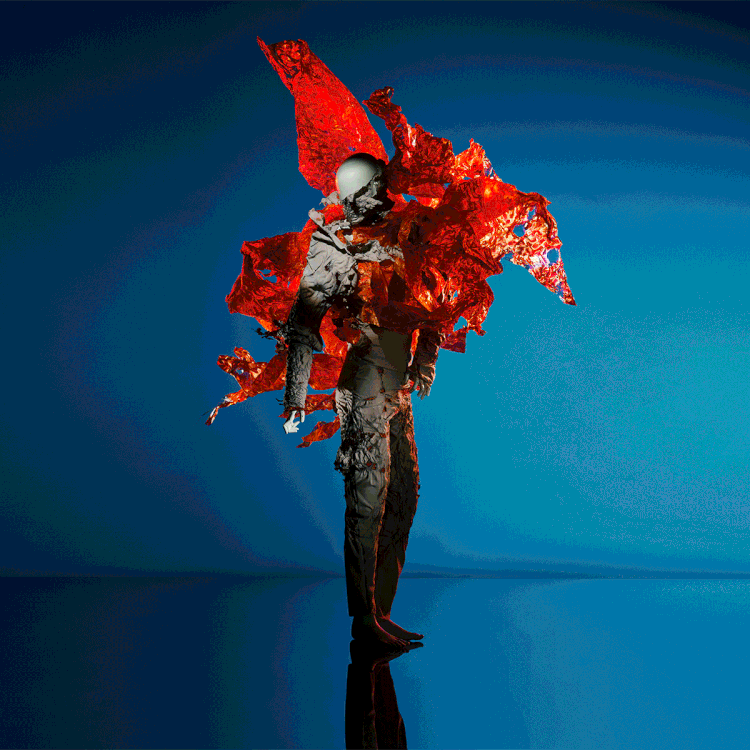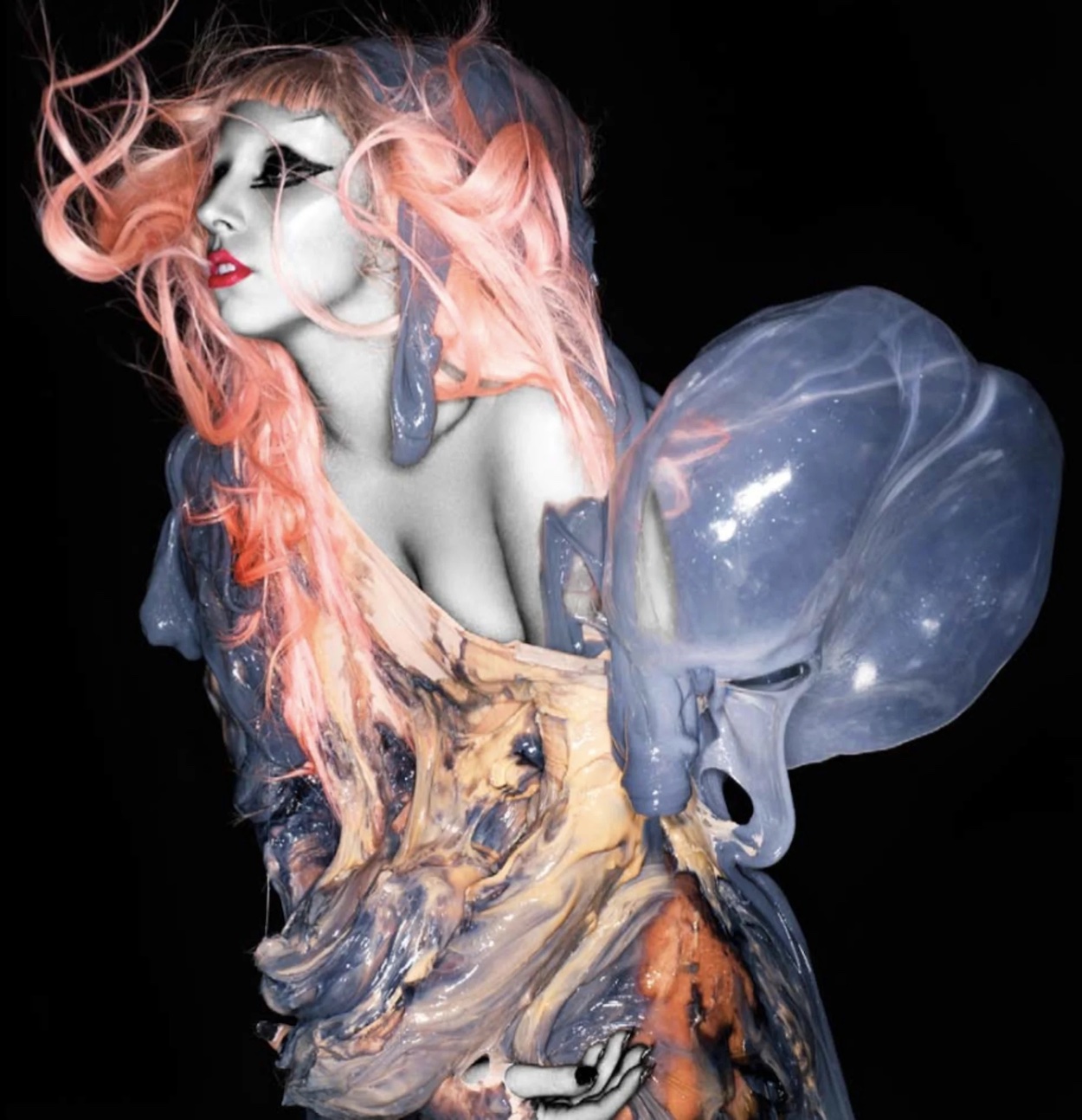Generalized pustular psoriasis (GPP) is a rare chronic skin disease caused by neutrophils—a type of white blood cell—accumulating in the skin, causing flares to erupt in reddened and inflamed skin all over the body. If left untreated, GPP can be potentially life-threatening due to complications from sepsis and renal failure. The disease causes a major quality-of-life impact for patients, but few truly understand its severity.
To bring awareness to the condition, pharmaceutical company Boehringer Ingelheim enlisted Dutch designer Bart Hess to create The Unwearable Collection, a four-piece series of avant-garde costumes that manipulates sharp objects like glass and knives to illustrate GPP’s physical and emotional toll. “The designs [he] created are inspired by hearing firsthand accounts from real patients,” Claudia Beqaj, executive director of dermatology at Boehringer Ingelheim, tells Surface. With an aura of intrigue and precarity, Hess’s macabre creations use the human body as a platform to experiment with materials he describes as foamy, sweaty, blobular, and molecular.
In His Own Words: “Combining a material and a human body is a ‘red thread’ running through my work,” Hess once told Current Obsession. “For me, it’s about creating a tension between the two almost as if they fuse, but they never totally do. The physical reaction when doing so is of great importance for me.”
With the campaign set to kick off, we revisit three pivotal moments in Hess’s career.
After seeing his work photographed by Nick Knight for Vogue, Lady Gaga asked Hess to create a custom slime-soaked dress for her Born This Way album photoshoot. Hess developed a range of viscous substances varying in color and thickness, inspired by Photoshop’s Liquefy filter and Gaga’s own references of “alien” and “birth.” The blob-like material also appeared in the title track’s music video, where it was draped over a hat worn by Gaga and only existed for fractions of a second before morphing into another material entirely. (Hess, who was in his mid-20s at the time, has described the experience as one of his career’s biggest “pinch-me” moments.)
At the 2013 Lisbon Architecture Triennale, Hess leaned into “cyborg couture” through a performance staged within a fictional future city inhabited by experimental technologists. During the piece, a body suspended from a robotic harness plunges into a shimmering reflective pool of molten wax. The material soon crystallizes, curves, and envelops the performer with layered architectural forms like a 3D printer, yielding what Hess describes as a “physical glitch” and a “manifestation of corrupt data in motion.”
As part of a commission by the Dutch National Glassmuseum in Leerdam, Hess began playing with shape by repetition, culminating in a performance, called Echo, in which models are seemingly ensnared in a shell of rippling liquid glass. Using footage from the shoot, Hess’s skillful editing created a sculptural timelapse that resembles a gelatin Slinky of sorts, or as he calls it, “a common software filter which uses the history of movement to visualize its journey through time.”



